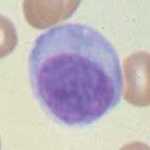Plasma cell

|
WikiDoc Resources for Plasma cell |
|
Articles |
|---|
|
Most recent articles on Plasma cell Most cited articles on Plasma cell |
|
Media |
|
Powerpoint slides on Plasma cell |
|
Evidence Based Medicine |
|
Clinical Trials |
|
Ongoing Trials on Plasma cell at Clinical Trials.gov Clinical Trials on Plasma cell at Google
|
|
Guidelines / Policies / Govt |
|
US National Guidelines Clearinghouse on Plasma cell
|
|
Books |
|
News |
|
Commentary |
|
Definitions |
|
Patient Resources / Community |
|
Patient resources on Plasma cell Discussion groups on Plasma cell Patient Handouts on Plasma cell Directions to Hospitals Treating Plasma cell Risk calculators and risk factors for Plasma cell
|
|
Healthcare Provider Resources |
|
Causes & Risk Factors for Plasma cell |
|
Continuing Medical Education (CME) |
|
International |
|
|
|
Business |
|
Experimental / Informatics |
Editor-In-Chief: C. Michael Gibson, M.S., M.D. [1]
Overview
Plasma cells (also called plasma B cells or plasmocytes) are cells of the immune system that secrete large amounts of antibodies. They differentiate from B cells upon stimulation by CD4+ lymphocytes. The B cell acts as an antigen presenting cell (APC), consuming an offending pathogen. That pathogen gets taken up by the B cell by receptor mediated endocytosis, and broken down within these endosomes after fusion with lysosomes releasing proteolytic enzymes onto the pathogen. Once the enzymes break down the pathogen, pieces of the pathogen (which are now known as antigenic peptides) are loaded onto MHC II molecules, and presented on its extracellular surface. Once on the extracellular surface, the CD4+ T-helper lymphocyte will bind to the MHC II/Antigen molecule and cause activation of the B cell, which includes differentiation into a plasma cell, and subsequent generation of antibody against the consumed pathogen.
Physiopathology
After dividing for around five days, mature B cells differentiate into either plasma B cells or memory B cells. Plasma B cells originate in the bone marrow, then travel to the spleen or lymph nodes to secrete antibodies (approximately 10,000 per second). During the initial stages of an immune response the lifespan of plasma cells is very short, typically only a few days to weeks. However, following the process of affinity maturation, plasma cells can survive for months to years and continue to secrete high levels of antibodies. Memory B cells tend to be longer-lived and can therefore respond quickly upon second exposure to an antigen.
The class of antibody that a plasma cell produces depends on signals, called cytokines, from other immune system cells, such as macrophages and T helper cells. This process is called isotype-switching. For example, plasma cells will likely secrete IgG3 antibodies if they matured in the presence of the cytokine interferon-gamma. Since B cell maturation also involves somatic hypermutation, these antibodies have a very high affinity for their antigen.
Microscopic anatomy
Plasma cells are large lymphocytes with a considerable nucleus-to-cytoplasm ratio and a characteristic appearance on light microscopy. They have basophilic cytoplasm and an eccentric nucleus with heterochromatin in a characteristic cartwheel arrangement. Their cytoplasm also contains a pale zone that on electron microscopy contains an extensive Golgi apparatus and centrioles. Abundant rough endoplasmic reticulum combined with a well-developed Golgi apparatus makes plasma cells well-suited for secreting immunoglobulins.
Role in disease
Cancer of plasma cells is termed multiple myeloma. This condition is frequently identified because malignant plasma cells continue producing an antibody, which can be detected as a paraprotein.
Common variable immunodeficiency is thought to be due to a problem in the differentiation from lymphocytes to plasma cells. The result is a low serum antibody level and risk of infections.
References
External links
- Histology image: 21001loa – Histology Learning System at Boston University
- Template:Dorlands
- Histology at wadsworth.org